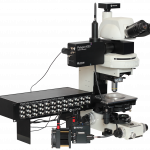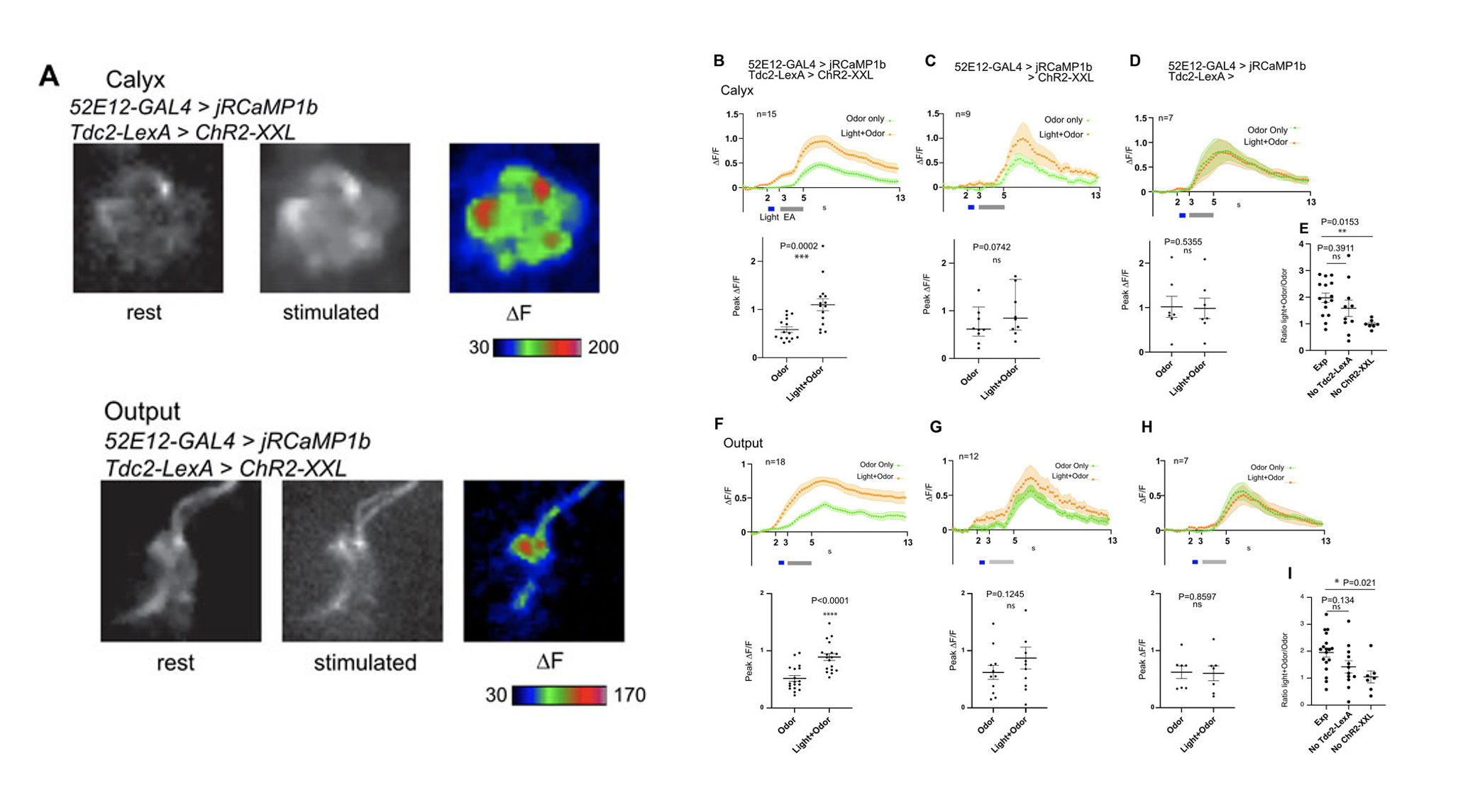Published on 2023/07/28 Research powered by Mightex’s Polygon1000 

Mohamed, A., Malekou, I., Sim, T., O’Kane, C. J., Maait, Y., Scullion, B., & Masuda-Nakagawa, L. M., Mushroom body output neurons MBON-a1/a2 define an odor intensity channel that regulates behavioral odor discrimination learning in larval Drosophila. Frontiers in Physiology, 14, 1111244 (2023).


Check out this recent work by Abdulkadir Mohamed of the Masuda-Nakagawa Lab at the University of Cambridge using the Polygon for patterned photostimulation. This work was published in Frontiers in Physiology. We are excited to see the broad range of applications of the Mightex Polygon across various research areas!
Introduction
This study focuses on understanding the neural circuitry responsible for regulating the selectivity of sensory representations in Drosophila larval mushroom body (MB) calyx. The MB is a crucial center for associative learning in insects, and the calyx is the dendritic input region responsible for odor discrimination. The MB calyx, involved in odor discrimination, receives input from projection neurons (PNs) and is regulated by inhibitory neurons and octopaminergic neurons. The researchers focus on two output neurons, MBON-a1 and MBON-a2, which arborize in the MB calyx.
Through characterizing the connections and polarity of MBON-a1/a2 neurons in the larval calyx, the authors found that MBON-a1/a2 neurons respond to odor in a concentration-dependent manner. This is in contrast to Kenyon Cells (KCs), which show more concentration-invariant responses. The MBON-a1/a2 neurons also have an impact on learning performance, although not strongly dependent on odor concentration.
The authors propose that MBON-a1/a2 neurons may serve as a channel for conveying odor intensity information to the output region of the MB. Therefore, they potentially play a role in the concentration-dependent modulation of MB output neurons and signals. This study contributes to understanding how the brain processes and represents sensory information, especially in the context of odor intensity, and its influence on learning and memory.
Methods
In this study, wandering stage L3 larvae were used for combined optogenetics and imaging. For their experiments, the authors used three different conditions for testing: “odor only,” “odor + light,” and “light only.” Control experiments were conducted using different constructs and pulse durations. Dissection of the larvae was performed under dim amber light (591 nm). An Olympus BX50-WI BX-FLA vertical illuminator with a Cairn OptoLED LED mount was used for widefield illumination of the sample through the objective. A 470 nm LED and Mightex Polygon400 were used for patterned illumination, controlled by Polyscan2 software. The full camera capture region was illuminated (256 × 256 µm) during the optogenetics experiment.

Figure 1: Activation of Tdc2-expressing neurons has only an additive effect on odor-evoked activity of MBON-a1/a2 in the calyx and axonal region. See https://www.frontiersin.org/articles/10.3389/fphys.2023.1111244/full
Findings and Conclusion
The study concludes that activation of MBON-a1/a2 impairs olfactory discrimination reward learning in larvae, but that there is not a statistically detectable dependence of this effect on odor concentration. The similarity between the calyx of the MBs in function and network organization to the piriform cortex of mammals, is a great model to understand the mechanisms of learning regulation. Using the Polygon, the drosophila larval calyx can be optogenetically activated in a targeted manner allowing precise manipulation of a small number of neurons.
This paper demonstrates the use of the Mightex Polygon for patterned optogenetics experiments in drosophila larvae. To learn more about how you can use the Polygon for your research, read more here.
Catherine Thomas, PhD Senior Liaison and Development Scientist at Mightex
To read the full publication, please click here.



